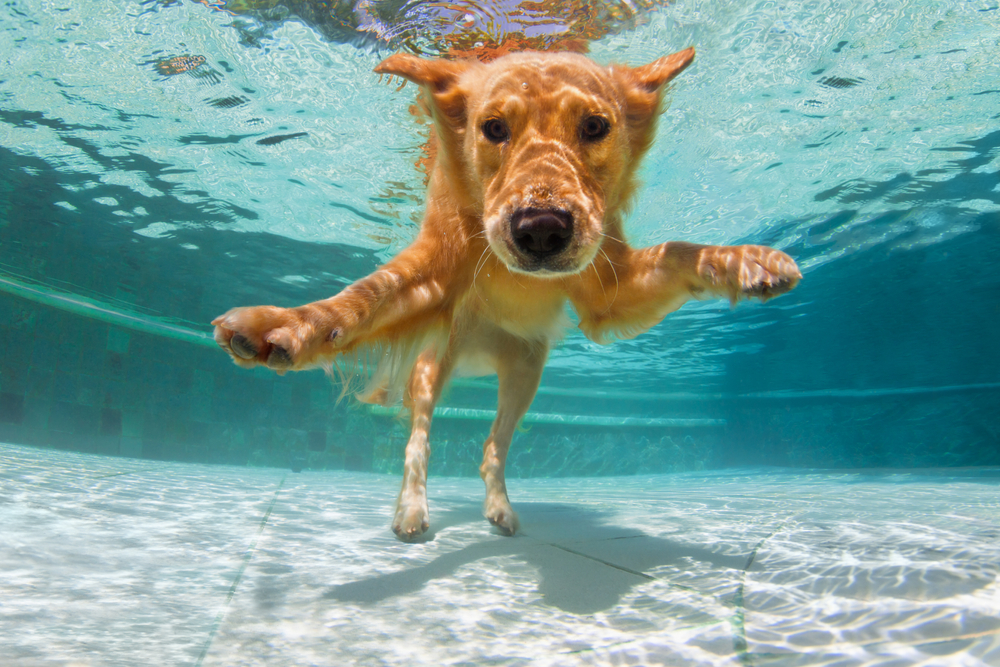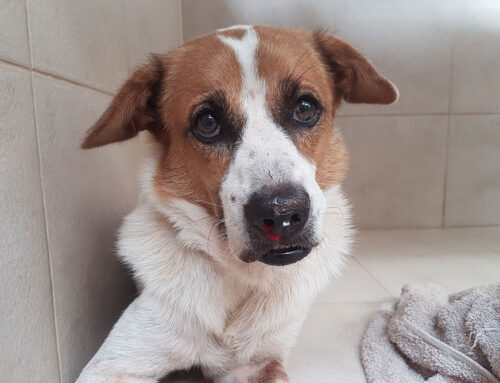Summertime’s pleasant weather encourages us to enjoy the outdoors with our pets, but the higher temperatures increase their heatstroke risk. Because they sweat minimally, pets have difficulty keeping cool, and they develop heatstroke when their body temperature rises above normal. Our North Waterloo Veterinary Hospital team takes your pet’s heat safety seriously, and we’re answering your heatstroke questions and providing tips to help you keep your pet cool this summer.
Why do pets develop heatstroke?
When temperature or humidity levels are high, pets pant—dogs’ primary cooling mechanism—but panting is ineffective when ambient moisture prevents evaporation, or when the temperature is above your pet’s threshold. Common heatstroke causes include:
- Leaving pets unattended in cars — A vehicle’s interior temperature quickly rises to dangerous levels, which can happen with mild or severe heat.
- Leaving pets outside — Without shade or enough water, pets left outside when the temperature is high may overheat.
- Exercising excessively — When temperature or humidity levels are high, outdoor exercise can quickly increase your pet’s body temperature, especially if they are not yet accustomed to the heat.
What are pets’ heatstroke signs?
Heatstroke occurs when a pet’s body temperature rises above the normal range (i.e., 99.5 to 103.5 degrees). At a body temperature above 103.5 degrees, pets’ cells become damaged throughout their body, leading to multiple clinical signs and medical consequences. Pets who have heatstroke may display the following signs:
- Reddened gums
- Excessive panting
- Excessive drooling
- Vomiting
- Diarrhea
- Confusion
- Collapse
- Seizures
Can heatstroke lead to complications?
Your pet can develop serious complications when heatstroke develops, and the damage may not appear until several days later. Heatstroke damages the body’s cells, and may lead to:
- Brain swelling
- Organ failure
- Clotting and bleeding problems
- Seizures
- Heart arrhythmias
- Fluid in or around the lungs
- Coma
- Death—19% to 59% of pets with heatstroke die from complications, despite appropriate treatment
Which pets have a high heatstroke risk?
Dogs are more at risk for heatstroke than cats, who rarely develop the condition. Some dogs have a higher heatstroke risk than others, such as:
- Older dogs — Older dogs may fatigue more easily than younger dogs, and may be more heat sensitive.
- Dogs with medical conditions — Dogs who have hormonal diseases, laryngeal paralysis, collapsing trachea, heart disease, and other debilitating conditions have an increased susceptibility to heatstroke.
- Obese dogs — Overweight dogs have to work harder than normal-weight dogs to get around, and may develop breathing difficulties, which can hamper cooling.
- Flat-faced (i.e., brachycephalic) dogs — Panting requires adequate surface area for airway heat exchange, and short-nosed, flat-faced dogs lack this surface area. They also commonly have narrow airways and long soft palates that interfere with breathing. Bulldogs, pugs, and similar breeds are much more likely to suffer heatstroke after normal or minimal outdoor activity than dogs whose head is a more neutral shape.
How is pet heatstroke treated?
If you believe your pet is suffering heatstroke, implement emergency at-home treatment before bringing them to the veterinary hospital. If your pet’s rectal temperature is higher than 104 degrees, immediately bring your pet to a cool indoor area, and soak their fur in cool water. Do not use ice-cold water, which constricts pets’ blood vessels and slows their body’s ability to cool down. Once your pet’s body temperature is lower than 103.5 degrees, or if their temperature has remained higher than 104 degrees after 10 minutes, bring your pet to their veterinarian for evaluation and care. Your veterinarian will likely admit your pet for several days to run tests, administer medications and IV fluids, and monitor your pet for serious complications.
How can I prevent my pet’s heatstroke?
The best way to avoid heatstroke complications is to keep your pet cool and safe in the first place. Follow these heat safety tips to prevent a tragedy:
- Limit outdoor time — Exercise your pet during the morning or evening hours, and do not allow your pet to be outdoors for long periods.
- Monitor your pets — Never leave your pet alone outside—continually monitor them for heatstroke signs, so you can take quick action if necessary.
- Avoid hot cars — Never leave your pet unattended in a closed car. If you and your pet go for a ride, always run the air conditioning.
- Provide water — Ensure your pet has unlimited cool fresh water when outdoors, and provide rest opportunities and shade.
- Keep pets indoors — Keep in mind that your pet is safest in your quiet, cool home during summer gatherings that may occur during peak temperatures. Avoid the urge to bring your pet along to outdoor summer events, especially if they have a high heatstroke risk. Remember, some pets feel anxious in large crowds, which can increase their heatstroke risk more.
What are some indoor summer activities pets enjoy?

When the outdoor temperature and humidity levels are too high for you and your pet to play or walk, you can encourage them to play some entertaining indoor activities, such as:
- Training — Teach your pet some new skills or fun tricks. Consult a trainer to learn about positive reinforcement, and learn how to keep your pet mentally engaged.
- Chewing — Chewing satisfies your dog’s mental and physical needs. Safe chews made from nylon, rubber, Himalayan cheese, or highly digestible rawhide alternatives do not harm their teeth.
- Indoor swimming — Indoor swimming programs offer a controlled exercise session that will tire out your dog while keeping them cool.
- Indoor play — Keep your pet mentally stimulated with puzzle toys to solve or treats to retrieve.
Heatstroke can be deadly, but you can protect your pet and keep them busy indoors by following our North Waterloo Veterinary Hospital team’s simple heat safety tips. Remember, if your pet shows heatstroke signs, call North Waterloo Veterinary Hospital to schedule an emergency visit, or head to your local emergency veterinary hospital.







Leave A Comment